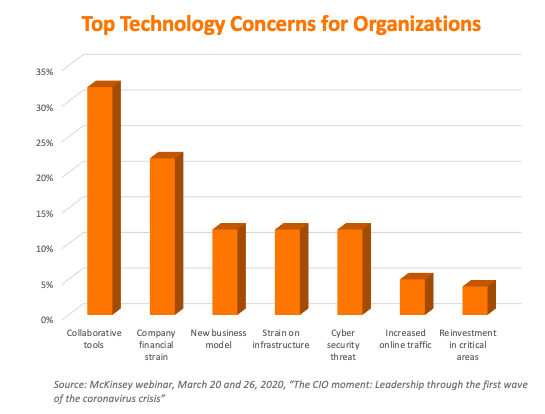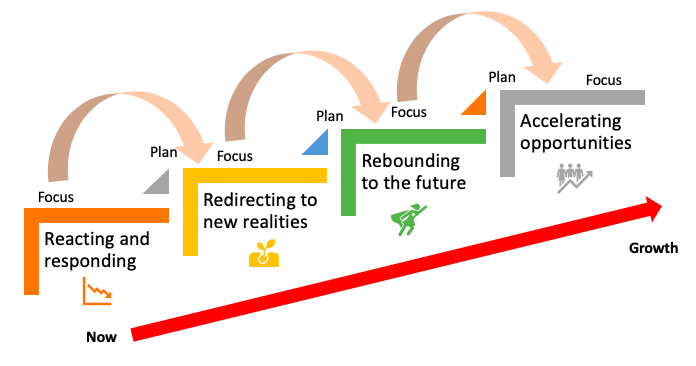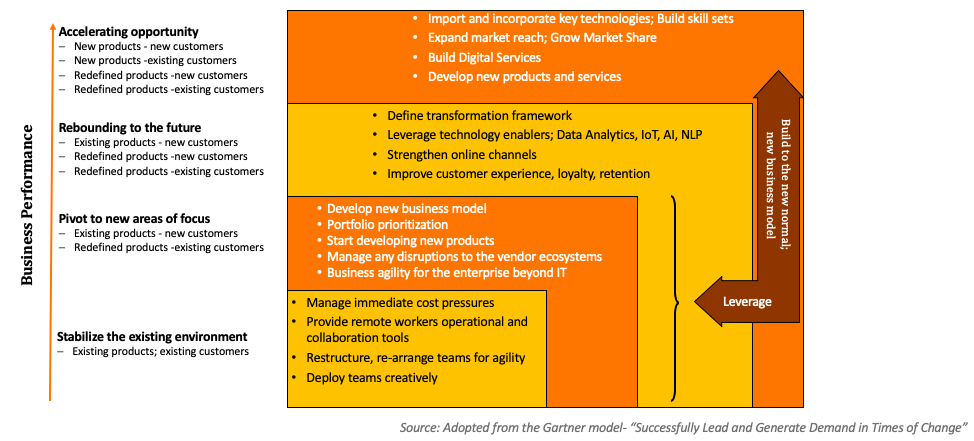Managing Recovery & Growth During COVID-19
Navigating COVID-19
The Covid-19 crisis has impacted people globally and caused tremendous damage in terms of people’s lives. The impact has been felt by societies on personal and economic levels. In addition, Covid-19 has created challenging times for almost every industry and it is changing their business patterns significantly.
As the impact curve of COVID-19 is flattening in many areas of the country, business and IT leaders are evaluating and planning for an advantageous position once the society and business open. The question and challenge to CIOs are not just how to manage the crises in the short term, but also how to position the enterprise to come out stronger in the new normal. Cutting costs and downsizing projects will be necessary in many cases, but CIOs need to make sure that the enterprises are well placed to succeed as they come out of the crisis.
Reimagining
While the CIOs need to scale down in the short-term, they must also investigate new focus areas for the future. To do that, they need to work with their business peers to reimagine the future. NY State Governor Cuomo is challenging his staff to reimagine, improve, and build back better as NY State is pulling out of the crises caused by Covid-19. “Let’s use this situation, this crisis, this time to actually learn the lessons valued from the reflection,” he said. “Let’s reimagine what we want society to be.” The CIOs need to have a similar vision. They need to “reimagine” the state of enterprise coming out into a new environment.
CIO feedback
A CIO survey done by McKinsey in March showed the top technology concerns felt by the CIOs. CIOs are facing the greatest challenge of their careers. The survey clearly shows that the CIOs are worried about the immediate urgent needs and the future positioning of the business. With almost every employee working remotely, the need for collaborative tools was at the top of the list.

Overall, they are trying to tackle remote worker productivity, a large increase in customer help center calls, new eCommerce demands, security threats and pressure to improve customer experience. How they react will likely shape their competitiveness in the years to come.
Given the wide variety of issues they are facing, they must focus on multiple dimensions.
- Manage and stabilize immediate needs
- Prioritize and scale down as required
- Work with business peers to focus on new areas
Gartner Model
Gartner’s analysis shows that 3 out of 4 companies will stall during this crisis. The plan companies put together now, will not only help them through the recovery process but also help them grow over the next decade. Many companies may potentially be planning on growth and efficiency strategy. COVID-19 now gives them the opportunity to finalize those plans and start acting upon those plans.
Gartner has come up with recommendations and an action plan for recovery from a major crisis. Though their recommendations are not focused on digital transformation, their plan leads to digital transformation in its final phases. It consists of a 4-phase framework to help organizations through this crisis. The first phase starts after the crisis event has occurred.
4-Phase Framework

Each phase helps the next phase build progressively with the understanding that during phase 1 and partially through phase 2, the company performance will be impacted due to the COVID-19 crisis. The 4 phases are focused on stabilizing, rebuilding operations, rethinking the organization, and accelerating the adoption of digital transformations.
The chart on the next page shows the 4 phases and the action steps within each of them.
Navigating the New Normal

iLink’s Recommendations
The 4-Phase plan can help organizations react to immediate needs while planning for the future. The key elements of future planning are very similar to the digital transformation process.
iLink believes that digital transformation is the key initiative that needs to be on the CIOs’ agenda as they start drafting the plans for recovery. Digital transformation encompasses the whole enterprise including people, processes, technologies, and most critically the customer. The benchmark to be watched in the future will be the ability to change as the customer behavior and markets adjusting to the new reality. Digital transformation can be a huge undertaking. CIOs working with their business counterparts can formulate a strategy, prioritize, and then draft a roadmap and an execution plan.
At iLink, we deliver next-generation digital transformation solutions to help clients solve complex business and technology challenges, improve organizational effectiveness, increase business productivity, and realize sustainable enterprise value. We navigate clients through the lifecycle of a digital transformation initiative with a lean approach and a focus on results. Each engagement is measured by its ROI and potential for new business opportunities. iLink’s digital strategists work with clients to engineer high-impact business outcomes for technology-driven initiatives. iLink’s digital strategy consulting services focus on establishing traction through short term wins while setting a roadmap for sustained success. The results we engineer impact key areas of business operations:
- Revenue and Growth
- Cost and Efficiencies
- Risk Mitigation
To find out how iLink can help you transform and successfully address the challenges and opportunities of this new, unforeseeable future, get in touch today.


